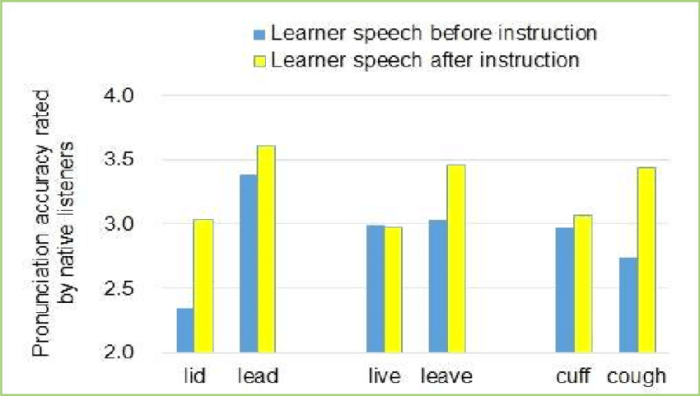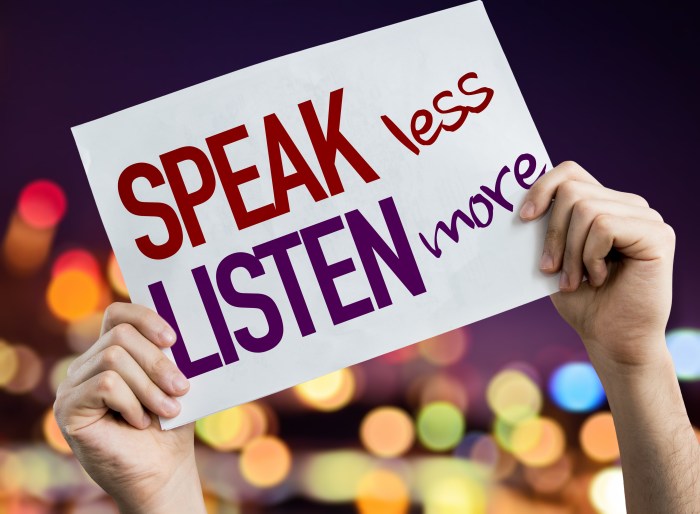Listeners usually realize how tense a speaker is. – Listeners Usually Realize How Tense a Speaker Is: Uncovering Non-Verbal, Vocal, and Psychological Cues. As listeners, we often have an uncanny ability to detect when a speaker is feeling tense or nervous, even if they try to hide it. This ability can have a significant impact on our perception of the speaker and the effectiveness of their message.
In this article, we will explore the various cues that listeners can use to identify tension in a speaker, including non-verbal cues, vocal indicators, and psychological manifestations. We will also discuss strategies that speakers can use to manage tension and deliver more confident and engaging presentations.
Non-verbal cues are often the most obvious indicators of tension in a speaker. These cues can include fidgeting, pacing, excessive hand gestures, and a lack of eye contact. Vocal indicators of tension can include a shaky or trembling voice, a high-pitched or strained tone, and a rapid or hesitant speech rate.
Psychological manifestations of tension can include difficulty concentrating, forgetting lines, and feeling overwhelmed or anxious.
Non-verbal Cues of Tension

Listeners can detect tension in a speaker’s body language through physical cues such as:
- Fidgeting hands or feet
- Nervous laughter or stammering
- Closed or defensive posture
- Tense facial muscles or furrowed brow
- Rapid blinking or darting eyes
These cues can indicate nervousness and affect the audience’s perception of the speaker’s credibility and confidence.
Vocal Indicators of Tension

Tension can also manifest in a speaker’s voice:
- High-pitched or strained voice
- Monotone or robotic delivery
- Excessive volume or rapid speech
- Vocal fry or cracking voice
- Hesitations or fillers (e.g., “um,” “ah”)
These vocal cues can affect the speaker’s engagement with the audience and their ability to convey their message effectively.
Psychological Manifestations of Tension

Tension can impact a speaker’s cognitive and emotional state:
- Impaired memory and focus
- Increased anxiety and self-consciousness
- Difficulty organizing thoughts and ideas
- Negative self-talk and self-doubt
Managing these psychological effects is crucial for enhancing speaking effectiveness.
Strategies for Managing Tension
Speakers can employ various techniques to reduce tension:
- Practice and preparation
- Deep breathing exercises
- Relaxation techniques (e.g., meditation, visualization)
- Positive self-talk and affirmations
- Seeking support from mentors or colleagues
These strategies can help speakers overcome nervousness and deliver more confident and impactful presentations.
Audience Perception and Impact: Listeners Usually Realize How Tense A Speaker Is.
A speaker’s tension can significantly affect the audience:
- Reduced attention and engagement
- Difficulty understanding the speaker’s message
- Negative perceptions of the speaker’s credibility
- Diminished overall experience
Managing tension is essential for creating a positive and effective speaking environment that fosters audience engagement and understanding.
General Inquiries
What are some common non-verbal cues of tension in a speaker?
Some common non-verbal cues of tension in a speaker include fidgeting, pacing, excessive hand gestures, and a lack of eye contact.
How can vocal indicators reveal tension in a speaker?
Vocal indicators of tension in a speaker can include a shaky or trembling voice, a high-pitched or strained tone, and a rapid or hesitant speech rate.
What are some psychological manifestations of tension in a speaker?
Some psychological manifestations of tension in a speaker can include difficulty concentrating, forgetting lines, and feeling overwhelmed or anxious.